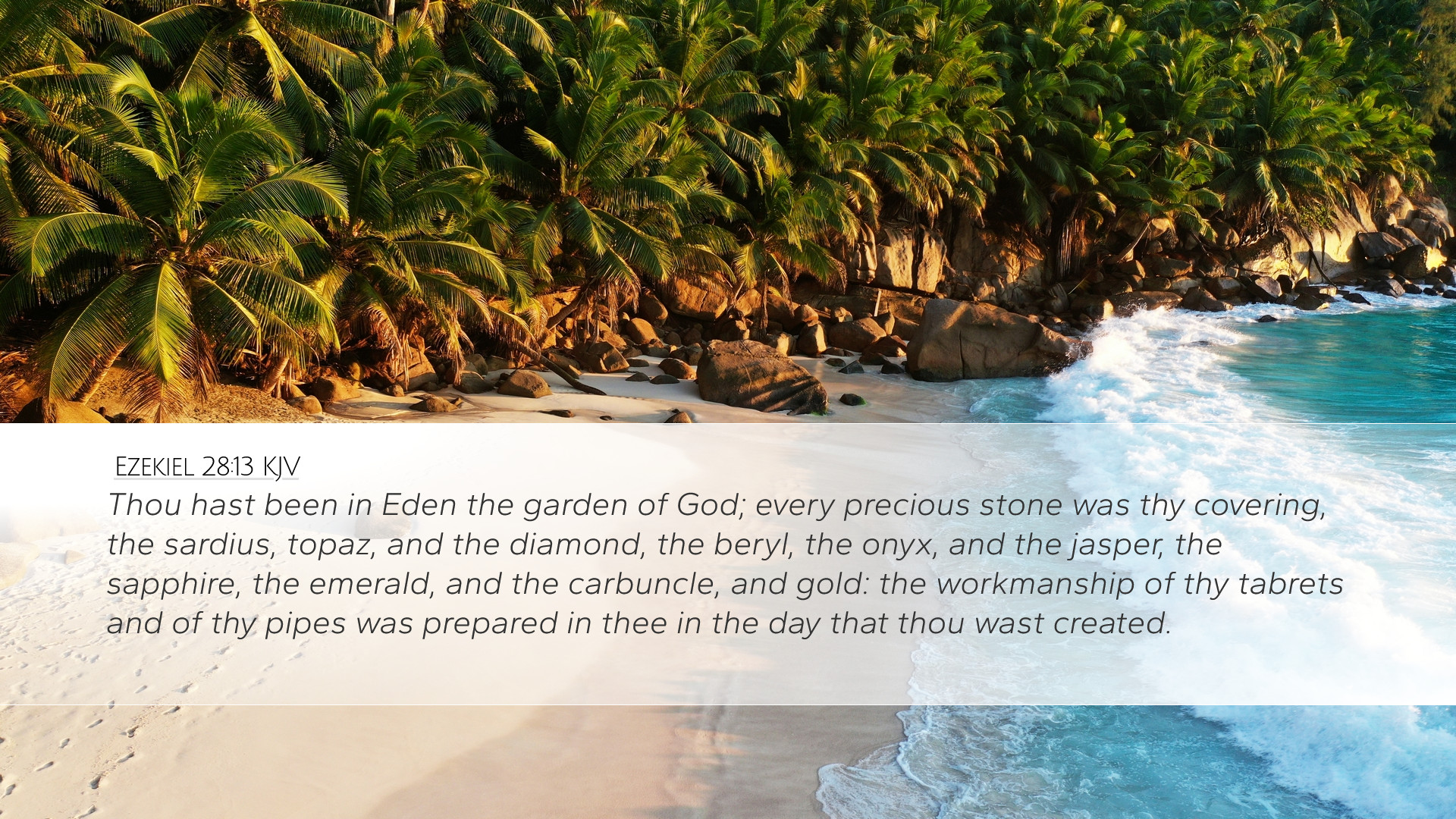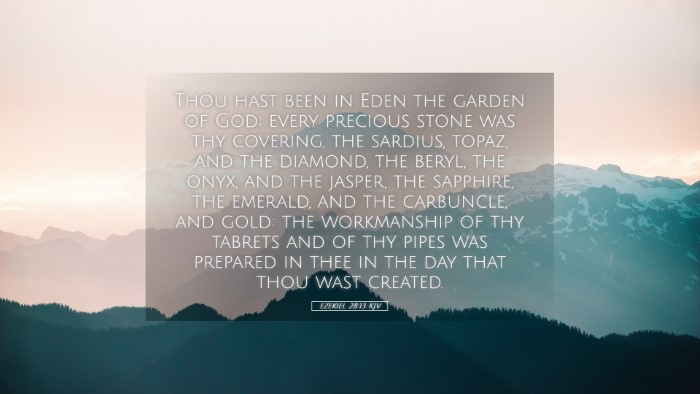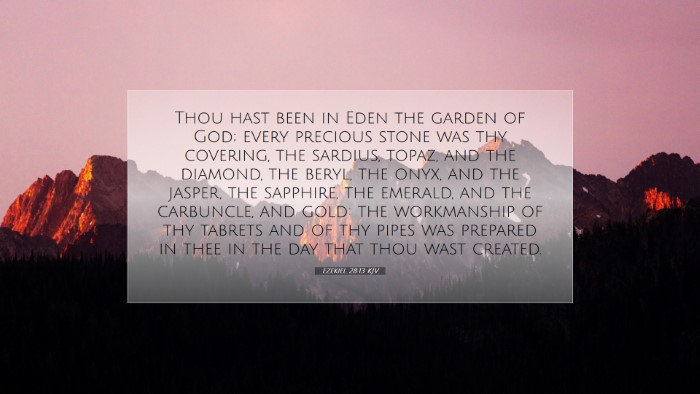Ezekiel 28:13 Commentary
Ezekiel 28:13 is a pivotal verse within the larger context of God's message through the prophet Ezekiel, addressing the King of Tyre. This verse, laden with poetic imagery and profound theological implications, invites careful exploration and interpretation. The following commentary consolidates insights from various public domain sources to enlighten pastors, students, theologians, and Bible scholars.
Understanding the Context
Before delving into the specifics of the verse, it is vital to recognize the broader context in which Ezekiel writes. The passage begins with a direct address to the leader of Tyre, highlighting the city's pride and subsequent judgment from God. Ezekiel often intertwines messages of judgment with visions of hope, offering a comprehensive view of God's justice and mercy.
Verse Breakdown
Ezekiel 28:13 states:
"You were in Eden, the garden of God; every precious stone adorned you: Carnelian, chrysolite and emerald, topaz, onyx and jasper, lapis lazuli, turquoise and beryl. Your settings and mountings were made of gold; on the day you were created, they were prepared."
Commentary Insights
Symbolism of Eden
Albert Barnes notes that the mention of Eden draws on the imagery of the Garden of God to underscore a state of original beauty and perfection. By associating the King of Tyre with Eden, Ezekiel emphasizes both the exalted beginnings and the tragic fall from grace.
Precious Stones
- Matthew Henry comments on the multitude of precious stones mentioned, interpreting them as symbolic representations of glory and wealth that the king possessed. Each stone connotes a specific quality of beauty and richness reflecting the king's majestic authority.
- Adam Clarke elaborates on the use of precious stones, suggesting that they not only symbolize material wealth but also the spiritual decline of those who turn from God. The lavish adornments stand in stark contrast to the underlying pride that led to judgment.
Theological Implications
The theological implications of this verse are profound, illustrating the duality of human potential and moral failure. The imagery serves as a reminder that, while individuals may possess great beauty and authority, it is their connection to God that ultimately determines their standing. This draws attention to the necessity of humility before God's sovereignty.
Creation and Purpose
Matthew Henry also highlights the phrase "on the day you were created," pointing out that the king, much like other created beings, was endowed with purpose and beauty by God. This serves to underscore a critical theological principle: all creation is inherently dependent upon its Creator for value and significance.
Reflections for Today's Leaders
This passage challenges contemporary leaders and believers, urging reflection on the sources of their authority and the manner in which they wield it. The cautionary tale of the King of Tyre warns against arrogance and self-sufficiency, reminding one that true strength comes from humility and alignment with divine will.
Conclusion
The brevity of Ezekiel 28:13 does not diminish its depth. It encapsulates vital truths about human nature, divine judgment, and the necessity of remaining rooted in God's grace. Pastors, students, and theologians alike are prompted to explore these themes further, reflecting on how they interact with our understanding of leadership, prestige, and the richness of God's creation.
Further Reflection
In summary, the insights gleaned from Matthew Henry, Albert Barnes, and Adam Clarke serve as a foundation for deeper exploration into the complexities of Ezekiel 28:13. As scholars examine this text, they are encouraged to consider not only its historical and literary context but also its personal relevance for contemporary faith practice.


